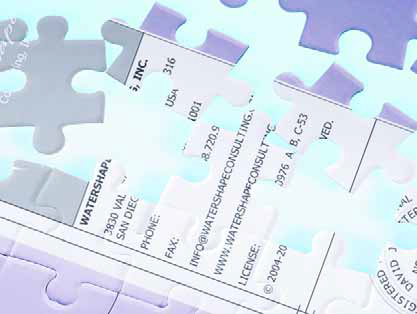computer-assisted design
As all professional designers know, prospective clients can be unpredictable. Sometimes they get in sync with what we're doing right away, and it seems every step is a positive one. Other times, however, they can be slower to figure things out, and the process can become more complicated. I started working for a pool-construction company soon after graduating from college with a degree in industrial design. This was before
I've been working with digital design technology for nearly ten years at this point, and I have to say that the rate of change with both the software and the hardware has been rapid enough to make a casual observer's head spin. And that's fine, because those of us who've been involved with it from the beginning have come to expect no less. In my case, however, I didn't start out with computer design. In fact, I'd been working as
I grew up in my father's pool business - a successful design/build firm based in Henderson, Nev. Even in high school, I was consciously preparing myself to get involved on the design side of things and had signed up for a drafting class to start developing the requisite drawing skills. But something big was happening in the late 1990s: I was all set for my drafting class and had equipped myself with the tools I'd need
In my last “Currents” column (June 2009), I began a discussion of Project Manuals with an overview of these written specifications and other construction documents and how they are formally bound and made part of a project’s contract documents. This time, we’ll dig inside the manuals and take a closer look at what they contain. Let me start with a simple recommendation: If you don’t already work with Project Manuals in some form, now is probably a good time to get started – especially if you’re a watershaper who prepares designs to be
I think we can all agree that design communication between architects, engineers, designers and contractors should be clear and concise. If that’s the case, it follows that plans and other construction documents should be uniform in their organization and layout – in other words, that they should follow a set of standards to which everyone in the design/construction community can and will adhere. Why the bother? The plain fact is that any given project involves a cast of characters that will be different – sometimes completely so – from just about any other project. This is why I’m such a strong advocate for
The most important skill needed by any designer is the ability to communicate clearly. This skill takes many forms, from verbal descriptions, well-assembled photographs and material samples to graphical depictions of concepts, details, dimensioned layouts and other drawn elements. When a watershaper is pushing design limits, in fact, he or she is often called upon to use all of these communication tools to convey ideas and aspire to offer something unique. In recent years, computer-aided design (CAD) systems have become increasingly popular as a tool in preparing construction drawings. Combined with the designer's creativity, these programs assist greatly in the production of plans. Unfortunately, however, our usage of them varies greatly in style and content from project to project and designer to designer. Indeed, these variations can be so radical that some plans are not easily understood by other professionals; moreover, the exchange of electronic CAD files is not always as convenient or efficient as it should be. This is why a group of industry experts has banded together to create the National CAD Standard (NCS), which is the core subject of this brief series of articles. That effort, which has met



















